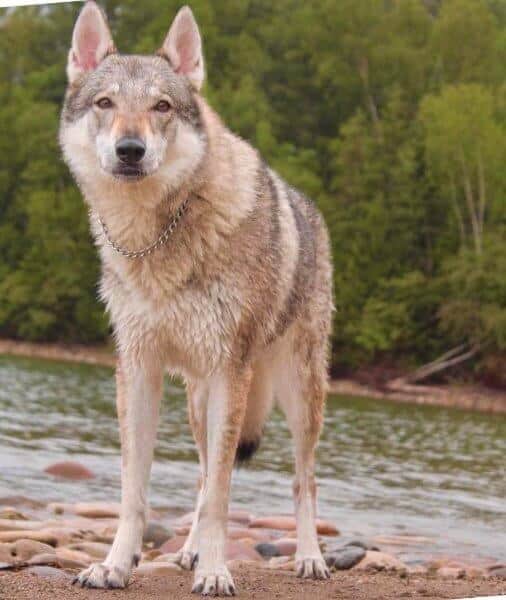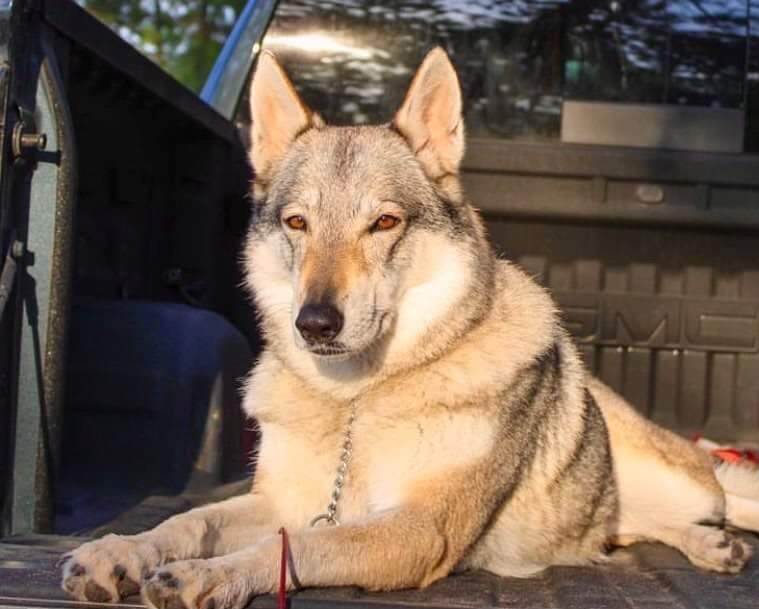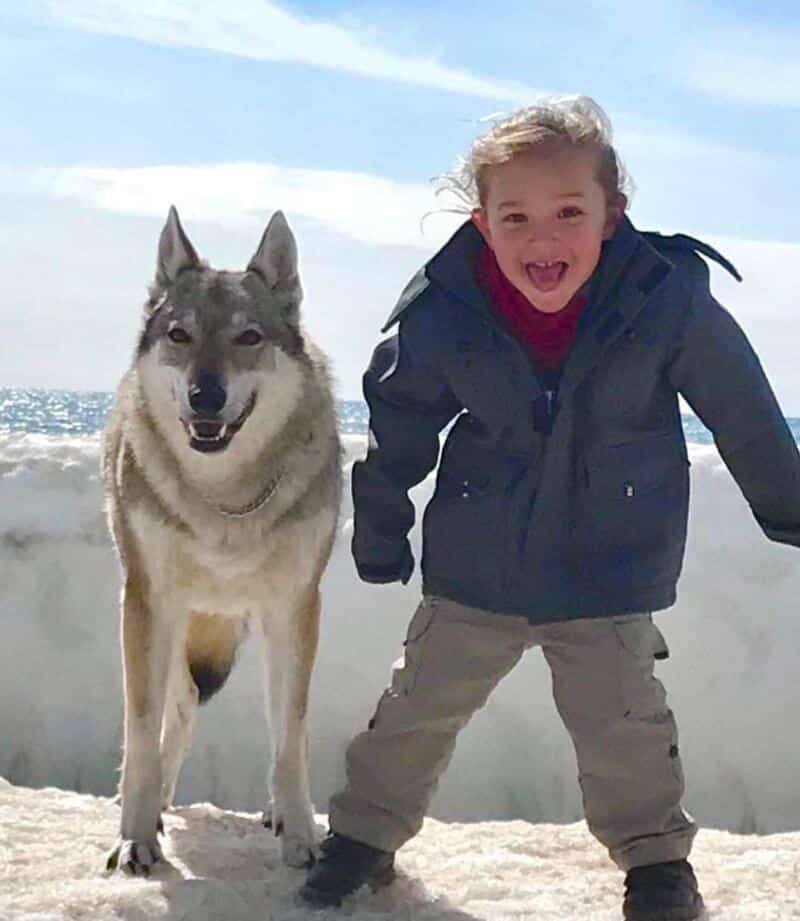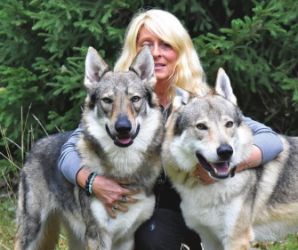
Home » Czechoslovakian Vlcak Characteristics

The Czechoslovakian Vlcak (“CsV”) is influenced by the thousands of generations of its Carpathian wolf ancestors from which it inherits many traits. These traits include an immense intelligence, superior olfactory and sensory abilities, and strong pack bonds that include members of its human family. CsVs place a strong emphasis on pack hierarchy and will allow the human to take the place of the pack leader—if the human is up to the challenge. They are extremely aware of their surroundings, and because of their superior-developed senses, they can be extremely vigilant and highly reactive.
It’s typical for Czechoslovakian Vlcak to have a late adolescence, as most reach maturity at eighteen to twenty-four months; males sometimes even later. At this time, pack dynamics can often shift. Same-sex aggression can be common because of hierarchy challenges; spaying and neutering often does little to stop this behavior. It may lessen the intensity of the behavior, but not always. Males can be particularly challenging at this time. Calm, consistent training is critical.

As a breed, the Czechoslovakian Vlcak is generally very healthy, with very few genetic diseases present due to the health testing that has been ongoing since the beginnings of the breed. The female reproductive cycle is usually twelve to fifteen months. They are classified as monoestrous animals; “come into estrus only once a year.” CsV are natural birthers and most make excellent mothers.
Czechoslovakian Vlcak puppies mature quickly in early puppyhood and are robust and healthy. Early extensive socialization is a must. Socialization needs to be continued until, at the very least, the CsV has reached adolescence. As puppies and young adults, they often have extremely short attention spans. They can also be extremely “mouthy” as puppies, much more than the traditional canine. This “mouthiness” will result in bruises and bite marks, and is not something that can be trained out. Sometimes it can be modified, but the behavior will still persist. Most CsV grow out of the extreme mouthiness by the time they reach adolescence. In females, this often turns into excessive licking. The extreme mouthiness sometimes reappears throughout adulthood when the CsV is stressed; the stress may be as simple as the dog feeling like you have been gone too long or they’re just SO happy to see you.

The Czechoslovakian Vlcak is temperamental and very active, with exceptional endurance and intelligence. They are quick to learn, but do not respond well to repetitive tasks and may not be interested in doing a task when asked. Often, traditional training methods used with the average dog are not successful. Calm, consistent training made to be a fun game is required. The CsV should be interested to perform the task and the understanding behind it if you expect to get good results. They need daily training and activities with their human. CsV do well if they have a job to do on a daily basis. They learn to love the work, enjoy it, and expect it. To do well with a CsV, you need to know that you have an intelligent partner and work as a team.
Czechoslovakian Vlcak excel at anything to do with using the olfactory senses. Since CsV want to be with you, they do not do well when left alone, even out in the yard with other canine companions. They view their human as the leader, so you are who they want to be with. They are also prone to separation anxiety, which usually results in destructive behavior. They are often escape artists, going over, under, and through fencing, doors, windows, etc. This is not to escape from you, but to try to gain access back to you. You and the family are “their pack,” and because of this strong bond, they do not do well with rehoming. In fact, some never recover if they are rehomed as an adult.

They are not a traditional guard dog; in that they often don’t guard or bark like a traditional guardian breed. Some do bark, but not as persistently as other guardian breeds; others make more of a huffing sound and bark very little. They will protect their family if the family is in real danger. They know and understand the difference between a real and perceived danger. Because of this understanding of the difference, the Czechoslovakian Vlcak rarely looks or acts like it is guarding. They can be territorial towards other animals in the space that they understand is “their territory.”
Czechoslovakian Vlcak do best on a raw diet; many dogs have few or no ancestors that have ever eaten kibble. That said, there are CSV that do well on kibble diets, while others never adapt. Living with a CsV is a way of life. Whether you like it or not, the human most often adapts his or her lifestyle to work around the CsV’s needs.
